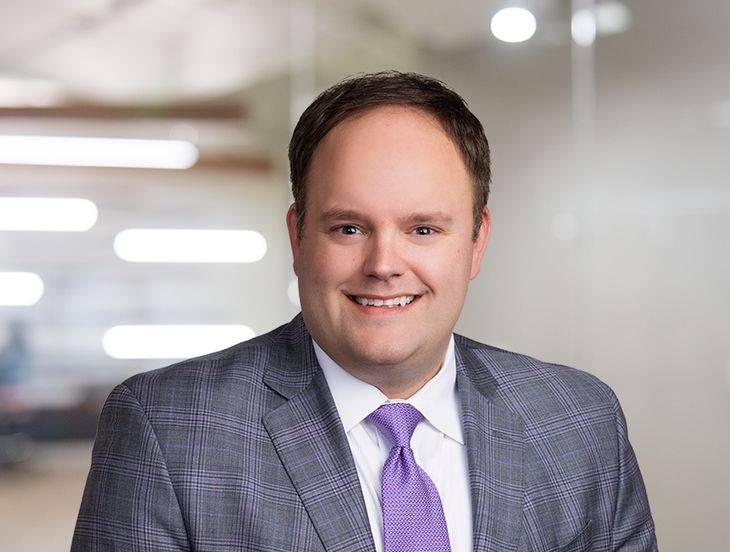Labor Board Advances Claims that Student-Athletes Are Employees: What Does Your Athletic Department Need to Know?
Insights
5.22.23
NLRB General Counsel Jennifer Abruzzo just took another big step in the continuing saga surrounding college sports by filing a complaint seeking to have student-athletes classified as employees under the National Labor Relations Act – which would clear the way for them to consider forming a union. The complaint against the University of Southern California, its athletic conference, and the NCAA alleges all three committed unfair labor practices as “joint employers” of football and basketball players at the school, the latest round in the push to classify student-athletes as employees. If successful, this action could fundamentally alter the nature of college sports. What does your athletic department need to know about this watershed moment?
How Did We Get Here?
This is not the first battle over whether student-athletes should be entitled to rights beyond those afforded to other students. In 2014, an NLRB Regional Director ruled that student-athletes on Northwestern University’s football team were employees and were permitted to join a union. On appeal, the NLRB declined jurisdiction and dismissed the petition, reasoning that most college football teams in the Big Ten (and NCAA) were public schools excluded from the NLRB’s jurisdiction, so it would not promote labor stability to have one or a few college football teams with unions.
Fast forward to 2021 and GC Abruzzo issued a nine-page memorandum announcing her belief that student-athletes were “employees” under the NLRA and that she would look to prosecute colleges, conferences, and the NCAA itself for alleged labor law violations — which practically invited groups to file unfair labor practice charges. Two organizations came off the bench in response to GC Abruzzo’s call. First, the College Basketball Players Association filed a charge in Indianapolis, naming only the NCAA as the supposed employer. That case remains under investigation but has evidently been put on ice.
Second came the case against Southern California, which was filed in February 2022 by a different “advocacy” group, the National College Players Association. This charge claimed that USC, its athletic conference, and the NCAA all jointly employ USC’s student-athletes and are thus jointly liable for any alleged labor law violations. After a lengthy investigation by the NLRB’s regional office in Los Angeles, GC Abruzzo and her team filed the pending complaint late last week on May 18.
What Is This All About?
At its heart, the complaint alleges that USC’s football and men’s and women’s basketball players are statutory employees, and the various rules imposed on student-athletes violate their supposed right “to engage in protected concerted activity.” The complaint also alleges that merely calling the athletes “student-athletes” is an independent violation of the NLRA in that the term “student-athlete” is allegedly used to deprive the athletes of their labor law rights.
Though these charges are significant on their own, naming USC’s athletic conference and the NCAA as putative joint employers is particularly noteworthy. One of the reasons the NLRB declined to pursue the Northwestern case was because the NLRB lacks jurisdiction over public entities that sponsor the overwhelming majority of Division I football and basketball programs.
The Board was unwilling to have a few teams with employee status and the right to unionize, while others would not have such rights. GC Abruzzo’s untested (and unsupported) joint employer theory seeks to pull public institutions into the NLRB’s ambit by claiming that because athletic conferences and the NCAA are private entities subject to the NLRB’s jurisdiction and because the conferences and the NCAA allegedly exert control over certain terms and conditions of the student-athlete’s playing conditions, even student-athletes at public institutions can all be considered “employees” of a conference or the NCAA. This, GC Abruzzo believes, is sufficient to confer NLRB jurisdiction over all of college football and basketball.
The joint employer doctrine under the NLRA is one of the most hotly contested issues in modern labor law, and the evaluation of who is or is not a joint employer seemingly changes each time the political makeup of the NLRB shifts. Despite GC Abruzzo’s intentions, any effort to foist the NLRB on public institutions will be met with significant opposition from the litigants, the courts, and Congress.
What’s Next?
Filing a complaint simply starts the process. This is just the first quarter. Next up, a hearing will commence before an administrative law judge (ALJ) in November. Following the ALJ’s decision, the losing party will undoubtedly appeal — teeing up a decision by the NLRB in Washington. While the NLRB currently has a Democratic-majority, any ruling by the Board is likely to come after the 2024 Presidential Election, meaning we could see a Republican-majority tasked with determining the fate of GC Abruzzo’s claims. While the complaint represents the most successful effort to date to classify student-athletes as “employees,” she has a long way to go before her views on the subject are the law of the land, and any decision by the NLRB can be appealed to a Circuit Court of Appeals, and possibly the U.S. Supreme Court.
This complaint comes at a time when student-athletes’ employment status is in flux across the country. Student-athletes are now able to use their name, image, and likeness to make money, but no court has ever held that a student-athlete is an “employee” of a university. This too could change with pending FLSA litigation in the Third Circuit. Such a finding would create questions over workers compensation benefits, wages, overtime, and what rights student-athletes may have as employees versus the rights they have as students. Should GC Abruzzo succeed, the traditions of amateurism in college athletics will be eliminated, altering the landscape of college sports forever.
Looking For More Information?
We’ll continue to monitor developments in this area and provide updates as warranted. To ensure you stay up to speed, make sure to subscribe to receive Fisher Phillips’ Insights directly to your inbox. If you have questions about the impact of this memo on your educational institution, please contact your Fisher Phillips attorney, the authors of this Insight, or any attorney in our Sports Industry Group, Higher Education Practice Group, or Labor Relations Practice Group.
Related People
-
- Mary Grace Miller
- Partner
-
- Joshua D. Nadreau
- Regional Managing Partner and Vice Chair, Labor Relations Group

